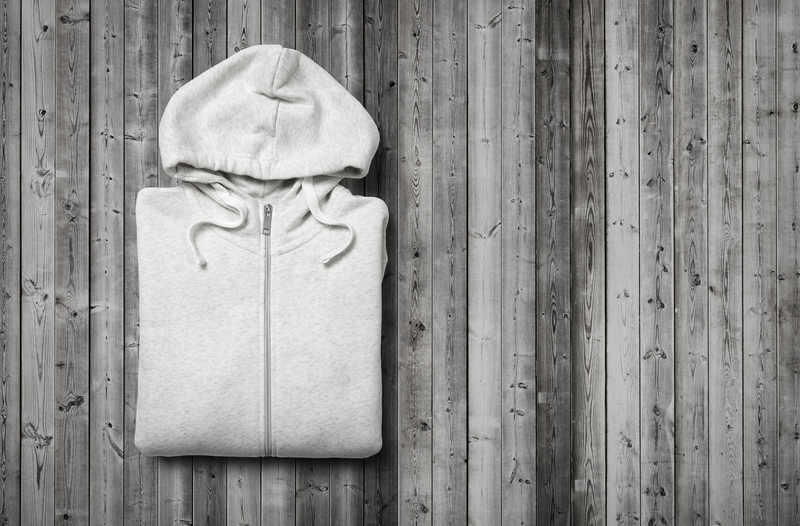What to Do With Broken or Unwanted Large Furniture Pieces: Creative and Responsible Solutions
Large furniture pieces--sofas, beds, wardrobes, bookshelves, dining tables--are investments that eventually become outdated, worn out, or simply unnecessary. When you face the dilemma of what to do with broken or unwanted large furniture pieces, it can feel overwhelming. Their sheer size, weight, and bulkiness make their removal and disposal complicated. But, there are practical, eco-friendly, and even profitable ways to deal with these mammoth furnishings.
In this comprehensive guide, we'll explore a plethora of ways to get rid of large furniture, focusing on responsible disposal, recycling, repurposing, and donating options. By the end, you'll know exactly what to do with your old, damaged, or excess furniture, preserving your sanity and the environment.
Understanding the Challenge of Large Furniture Disposal
Large furnishings are not like clothing or small gadgets--you can't simply toss them in the trash. Landfill space is limited, illegal dumping damages the environment, and many municipalities have rules against leaving furniture curbside. Moreover, many old furniture items contain materials (like treated wood or synthetic foams) that are best kept out of landfills.
- Logistical Issues: Heavy and cumbersome pieces are tough to move without injury or damage to property.
- Environmental Impact: Landfills are overloaded; furniture doesn't easily decompose and can release harmful chemicals.
- Legal Restrictions: Many cities fine residents for improper furniture disposal.
So, what are some smart options when it comes to removing big, unwanted couches, beds, or cabinets from your life?

Step 1: Assess the Condition of Your Furniture
Before taking action, evaluate your furniture. Is it gently used, extremely old, or truly broken? Depending on the answer, different removal or reuse strategies will make more sense.
- Good Condition: Minor scratches, loose screws, but overall sturdy and usable.
- Fair Condition: Some damage, missing hardware, structurally sound but needs work.
- Poor Condition: Broken parts, infested, rotted, or unusable.
This assessment determines whether it's best to sell, donate, recycle, or dispose of your oversized furniture piece.
Creative and Responsible Ways to Get Rid of Large Furniture
1. Donate to Charity or Reuse Networks
If your furniture isn't broken and retains decent life, donation is a charitable, sustainable approach. Many organizations, shelters, and thrift stores gladly accept furniture donations, and in some cases, even offer free pickup for large items.
- Popular Donation Center Options:
- Habitat for Humanity ReStores
- Salvation Army
- Goodwill
- Furniture Banks
- Local Shelters and Nonprofits: Help families in need, victims of disaster, or refugees settle in new homes.
- Online Giveaways: Use neighborhood networks like Nextdoor, Buy Nothing Facebook groups, or Freecycle for hassle-free donating within your community.
Tip: Ensure furniture is clean, free of pests, and safe for immediate use. Some organizations will only accept gently used items; check their guidelines first.
2. Sell Your Used Furniture
A large furniture piece that's functional but unwanted could fetch a decent price in the secondhand market. It's a smart way to offset the cost of a new item while keeping things out of the landfill.
- Online Marketplaces: List your furniture on Craigslist, Facebook Marketplace, OfferUp, or Letgo. Include high-quality photos, measurements, and a brief but honest description.
- Consignment Stores: Some local furniture or thrift shops will sell your pieces for a percentage of the sale price.
- Garage Sale: If you're clearing out multiple items, a yard sale can help you move things fast while connecting with local buyers directly.
Note: Large, heavy items may require buyers to provide their own transport. Be clear in your listing about pick-up logistics.
3. Hire a Furniture Removal or Junk Hauling Service
When dealing with truly broken or unwanted oversized furniture that cannot be reused or sold, consider hiring a professional hauling service. They have the manpower, trucks, and tools to safely remove bulky furnishings from your space.
- Junk Removal Companies: Services like 1-800-GOT-JUNK or Junk King offer scheduled pickups, often with same-day availability.
- Donation Pickup Services: Some charities offer furniture pickup--even for less-than-perfect items--if they can be refurbished.
- Municipal Bulk Pickup: Your city might provide scheduled bulky waste pickups. Availability and rules vary; check your city's website for requirements (some allow a limited number of items annually).
Warning: Not all services guarantee recycling. Inquire about their disposal practices, and opt for providers who recycle or donate whenever possible.
4. Recycle or Upcycle Damaged Furniture
Many broken furniture items are more than just trash; their wood, metal, and fabrics can be repurposed or recycled. Upcycling is an eco-friendly trend, transforming unwanted furnishings into stylish or practical pieces.
- Recycle:
- Some municipalities offer furniture recycling. Break down items into wood, metal, and plastic components to facilitate recycling.
- Scrap yards may accept metal bed frames, springs, or hardware.
- Check for local e-waste and bulky item recycling days.
- Upcycle Ideas:
- Convert an old dresser into a bathroom vanity or kitchen island.
- Transform cupboard doors into wall art or shelves.
- Use reclaimed wood from broken tables for garden planters or DIY projects.
- Turn a headboard into a unique bench, coat rack, or chalkboard.
Upcycling not only gives furniture a second life but also offers creative satisfaction and can add unique charm to your home.
5. Dispose Responsibly as a Last Resort
When all else fails and your furniture is unsalvageable--infested, soaked, or completely destroyed--responsible disposal is necessary.
- Contact Waste Collection: Arrange for a scheduled bulky item pickup or drop-off at a city transfer station. Most cities have designated days or services for heavy goods disposal.
- Landfill Protocols: If you deliver it yourself, ensure you follow all regulations regarding fees, assembly/disassembly, and acceptable materials.
- Avoid Illegal Dumping: Never leave large furnishings on sidewalks, alleys, or vacant lots, as this can incur fines and hurt the environment.
Tips for Preparing Large Furniture for Removal or Donation
- Disassemble Whenever Possible: Remove legs, cushions, shelves, or doors. Smaller pieces are easier to transport and handle.
- Clean Thoroughly: Wipe down surfaces and vacuum upholstered items to remove dirt or pests.
- Document for Donation or Sale: Take clear photos and note any imperfections. Transparency ensures smoother transactions.
Environmental Impact and Benefits of Responsible Furniture Disposal
What you do with your broken or unwanted large furniture pieces impacts far more than your living space. Here's why responsible disposal matters:
- Reduces Landfill Waste: Furniture is a major contributor to landfill overcrowding. By recycling, donating, or selling, you help reduce this pressure.
- Conserves Natural Resources: Repurposing and recycling save raw materials and energy otherwise used for manufacturing new products.
- Supports Local Communities: Donated furniture can furnish homes for those starting over after difficult times--adding immediate comfort and dignity.
- Minimizes Chemical Leaching: Old furniture often contains treated woods, foams, and synthetic materials that can leak harmful substances if dumped unsafely.

Frequently Asked Questions About Large Furniture Disposal
Can I leave my old furniture on the curb?
Usually not. Many cities fine residents for dumping large furniture outside of scheduled pickup days, or without a special sticker. Check your city's website to learn what's permitted in your neighborhood.
Who will pick up my old furniture for free?
Some charities and reuse centers offer a free pickup service if your used furniture is in good condition. Municipalities occasionally provide bulk trash pickup for large items. Always confirm eligibility and timing first.
How do I recycle broken furniture?
First, try to break your furniture into its component parts--wood, metal, fabric--and research local recycling programs to see if they accept these materials. Private haulers or city services may run periodic collection days for these items.
What should I do with a damaged mattress or sofa?
If the item is infested or badly damaged, recycling may not be an option. Contact your local waste management office to learn the legal and responsible disposal methods for these items. Some areas have special recycling centers for mattresses and upholstered furniture.
Can furniture be upcycled even if it's broken?
Absolutely! As long as there are parts that are safe and intact--like sturdy wood or iron--those can be transformed into new decor, DIY crafts, or utility pieces.
Conclusion: Choose the Best Option for Your Unwanted Furniture
When dealing with broken or unwanted large furniture pieces, you have more options than you might realize. Whether your furniture is ripe for donation, ready to be turned into a creative project, or needs safe disposal, choosing the right path helps your community, your wallet, and the planet. Take time to assess the condition of your pieces and explore responsible avenues--giving your old furniture a new purpose or a proper goodbye.
Key Takeaways:
- Assess the condition before deciding how to get rid of large furniture.
- Donate, sell, or give away gently used furniture whenever possible.
- Consider recycling or upcycling for damaged pieces.
- Use reputable hauling or disposal services when necessary.
- Never illegally dump furniture to avoid fines and environmental harm.
Whether redecorating, moving, or simply making room, responsible furniture disposal ensures your unwanted items find their best possible next chapter.